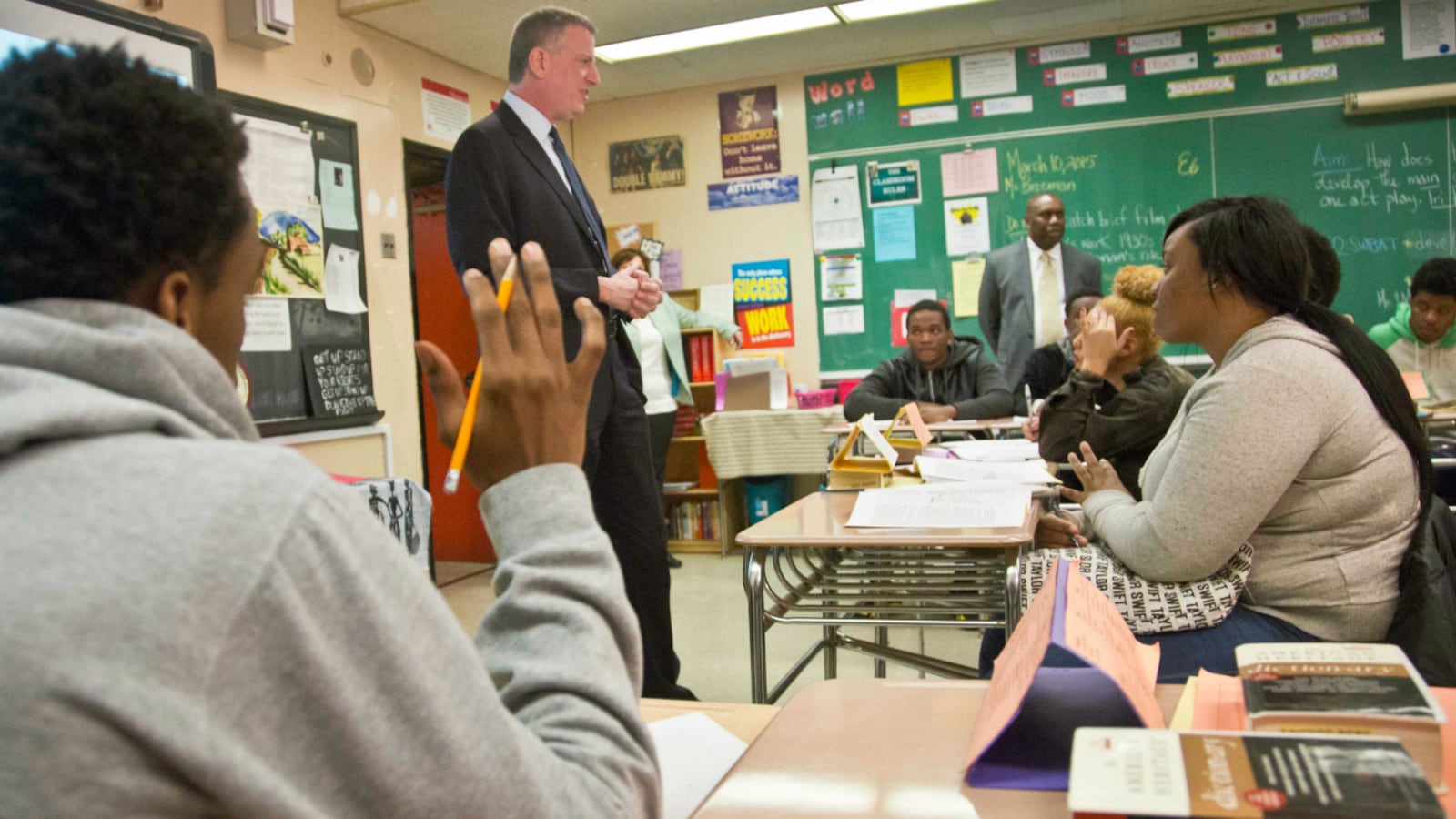After making an ambitious promise to rapidly turn around nearly 100 of New York City’s lowest performing schools, Mayor Bill de Blasio acknowledged Tuesday that after four years, almost $800 million, and a mixed record of success, a new approach is needed.
That new approach, it turns out, looks a lot like the old one.
City officials said its latest school-improvement strategy will borrow from many of the elements of the Renewal turnaround program, one of de Blasio’s highest-profile and most controversial education initiatives.
Renewal paired struggling schools with a slew of social services, including partnerships with non-profit organizations, extra mental health counseling, and dental clinics — in addition to academic help such as teacher training, longer school days, and new curriculum.
Under the new approach, called Comprehensive School Support, any city school could theoretically be eligible for similar help, though what that looks like could vary by school and there would be no guarantee of dedicated social services. At first,124 schools identified as struggling by the state and 71 previous Renewal schools will get extra support.
For now, things won’t change for the schools that have been part of the Renewal program. Those schools will “indefinitely” continue their non-profit partnerships, with the extra funding they received through Renewal intact. Programs extending the school day will continue as well, though they may be phased out in one or two years.
At a press conference, de Blasio acknowledged some of Renewal’s shortcomings, which were outlined in a separate city report released Tuesday, including delays installing capable principals, confusing lines of authority, and the stigma associated with being labeled failing.
“I am convinced it was the right road to go down,” de Blasio said Tuesday. “We did not say everything would be perfect.”
Unlike Renewal, officials stressed the new approach to school improvement won’t be part of a formal “program.” There will be no official list of participating schools or public performance criteria for measuring their success. Nor will there be a specific budget (which ballooned from $150 to $773 million over 4 years under Renewal). And there won’t be a separate staff dedicated to managing it; that responsibility will fall to newly-minted executive superintendents and borough-level offices.
School officials said the idea is to move toward a more “fluid” support system that can give all schools assistance when they need it instead of just to those schools identified as the lowest-performing schools
“The art and the craft of school improvement is not a program,” schools Chancellor Richard Carranza said. “You don’t pull it off the shelf.”
Schools will be identified for extra support partly through a data system called EduStat, still in development, that is meant to give officials a real-time sense of school performance.
Adopting a similar — but less defined — version of Renewal will allow the city to continue its basic strategy without some of the pressures (and accountability) that came with a formal program. Education officials struggled to manage the expectations tied the mayor’s soaring rhetoric, which suggested low-performing schools could quickly improve within three years.
Critics regularly blasted de Blasio for keeping students in schools that were improving only modestly, if at all. Research has shown the program’s impact has been limited, though city officials have pointed to rising graduation rates, test scores, and better attendance. (De Blasio and Carranza took questions about Renewal after touting an increase in students taking AP exams.)
At the same time, the education department has repeatedly declined to release findings of an analysis conducted by the RAND Corporation on the Renewal program, though it reportedly showed disappointing results. Of the original 94 schools, 14 have been closed, nine have left the program after being merged with other schools, and city officials said 21 have shown sufficient progress to slowly ease out of the program.
Months before Tuesday’s announcement, Robin Veentstra-VanderWeele, the chief program officer at Partnership with Children, said it would make political sense for the city to abandon the idea of running a formal turnaround program (The Partnership organization is a nonprofit partner in eight city turnaround schools).
“If you don’t tell anyone what the target is they don’t know what to shoot,” she said.
Still, New York is not alone in finding turnarounds of existing schools challenging. School districts from Rhode Island to Tennessee have struggled to find surefire approaches to improving schools that have underperformed for years.
Some experts noted that the latest iteration of school turnaround does not explicitly address one of the main reasons there are low-performing schools in the first place: Intense academic segregation spurred in part by admissions methods that sort students based on ability. Students who are less likely to pass state tests or graduate from high school are far more likely to be clustered together.
“These are problems that schools have been facing” for years, said Aaron Pallas, a professor at Teachers College who has studied the Renewal program. “It’s not as if what’s being proposed is a sharp break from what’s been tried before.”

